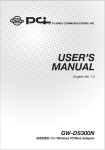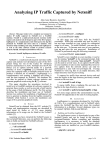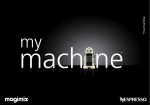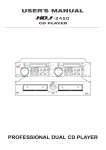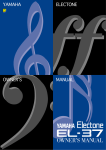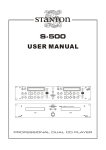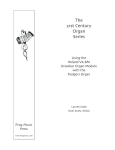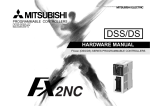Download Roland C-200 Owner`s manual
Transcript
Playing the Roland C-200 Church Organ Unedited Working Copy in Production Noel Jones, AAGO Frog Music Press Register this book. Registering gives you the electronic files that work with this book as well as updates to this book. Use the “Register Book” link on our website. There is no serial number or receipt required. This book is available as an electronic book or as a printed book. www.playingthechurchorgan.com ISBN-13: 978-1477695388 www.frogmusic.com Frog Music Press 201 County Road 432 Englewood, TN 37329 Roland is a registered trademark of Roland Corporation in the United States and/or other countries. QuickMenu™, Rodgers®, Rodgers Classic Organs®, Voice Palette™, DVM™, PDI™, TrueChimes™ are trademarks or registered trademarks of Rodgers Instruments Corporation , Hillsboro, Oregon. RSS® is a registered trademark of the Roland Corporation. Cover Photo: Lawrence Lougheed playing his residence Rodgers Organ at Brantford, Ontario, Canada. Photo: Roger Bayley © 2012 Frog Music Press This takes the place of the Index, to be inserted later: How to: Section I 1. Play the Demonstration Songs in the C-200 2. Play the Church Organ™ Book 1 Songs from the USB Drive 3. Play organ stops from the four basic tonal families. 4. Use Playing the Church Organ™ Book 1 with the C-200 Section II 5. Record and Playback 6. Harpsichord 7. Fortepiano 8. Piano 9. Celesta 10. Using as a MIDI Controller for Finale and other note entry programs. •E Playing the Roland C-200 Church Organ • Frog Music Press F• Playing the Roland C-200 Church Organ • Frog Music Press •1 About this book. I spent more than a year at a large church with an active choir program that sang a wide variety of liturgical music including the Magnificat and Nunc Dimittis in D of Dyson and the Evening Hymn of Gardiner using for an organ first in a school gymnasium and then in a basilica with 7.5 seconds reverberation, a Roland C-190 Church Organ with one manual, the predecessor of the C-200. Prior to that we used it with a Rodgers 730, one of the first digital organs by Rodgers, using the C-190 as yet another organ division. I have a tremendous respect for these instruments and have long anticipated writing this book. Playing the Roland C-200 Church Organ • Frog Music Press 2• A Reference Page This page will help you in and out of the four modes of operation. Imagine a drink dispenser that serves coffee, tea, hot chocolate and soup. Playing the C-200 is like that machine. It can do four different things: 1. Be an organ (this is what it does on startup). 2. Be a keyboard instrument - harpsichord, fortepiano, piano or celesta. 3. Record and playback. 4. Play preset organ registrations. It can only do one of these things at a time. Below we show you how to quickly and easily get in and out of these 4 modes of operation of the C-200. Whenever you find yourself “stuck”, turn back to this page. When you power up, the organ stops are ready to play for you. This instrument has three additional sections or modes that you enter but must leave to regain the ability to go back to play the organ stops. 1. Default - Organ stops will play when selected. 2. Choosing a Keyboard button (Harpsichord 8 I, for example) section cancels any organ stops. 3. Pressing [FUNCTION] enters into the recording/playback mode. 4. Press [MEMORY PISTON] permits you to use the preset piston combinations. This list will help when you need it: The Modes of Operation EnterLeave Play Organ StopsDefault Play Keyboards Press a Keyboard Button. Press an Organ Stop. Recording/Playback FunctionFunction Use Preset Registrations Memory Piston Memory Piston Press CELESTA button to clear Memory stops. Organ stops will not play when the center section keyboard instruments are playing. Playing the Roland C-200 Church Organ • Frog Music Press •3 A Quick Start. Playing the Church Organ™ is a system for learning to play the organ and the C-200 is an organ. This book prepares you to follow the directions in Playing the Church Organ™ and use the C-200 as an organ. How is this possible? Organs have at least two keyboards and pedals. Georg Frideric Handel wrote a lot of organ music that people play today on two keyboards (or three or four or even five) and pedals. The organs common in England then rarely had pedals and almost as rarely two manuals. France is known for churches with huge pipe organs. But every church with a huge pipe organ in the back had a small one in the front where the choir sang. And many churches only had a one manual (keyboard) reed organ. There’s been a lot of music written in France and England that was written for only one keyboard. So there’s a lot of music for a humble, one keyboard organ. But this is not humble organ, as you will find as we find out how to play music for two keyboards on it and even play the pedals. Moving ahead to the knobs on the left. 1. Press the [POWER] switch on the left of the keyboard. 2. Turn the [VOLUME] knob to the 12:00 position to start. 3. Set the [BALANCE] knob to the 12:00 position. 4. Set [TONE] to 12:00 - and later to the right or left as you prefer. 5. Set [REVERB] to 12:00 - and later to the right or left as you prefer. Note: If you forget to turn the [POWER] off it automatically shuts down if you do not play a note for 4 hours. That’s a long time between notes, but if you need it on 24 hours a day, see how to disable this on page 44 of the Owner’s Manual - which we will refer to as the OM from now on as necessary. Playing the Roland C-200 Church Organ • Frog Music Press 4• Playing the DEMO songs. The [FUNCTION] button works to reduce the number of confusing buttons and switches on this organ, just as the function key on computer permits a button to control more than one function. It is the second from the left of the round buttons in the center of the organ. We use it to play the demo songs built into the organ. Playing the demo songs. 1. Hold down the FUNCTION key 2. Press the PLAY/PAUSE button. The demonstration songs begin playing, one after another automatically until you press PLAY/PAUSE. Press STOP to stop playing. Function Stop Play/Pause Want to end the DEMO? Press FUNCTION. FUNCTION gives you access to functions listed under the three buttons to its right. Song Playing songs from memory or external USB drive. Demo Playing the demonstration songs built in. Visual Control Operating Roland V-Link video equipment. Playing the Roland C-200 Church Organ • Frog Music Press •5 Selecting the DEMO songs. There are four groups of songs. 1. Select a group by pressing one of the four harpsichord buttons - the song group numbers are below the button. 2. The group button will flash. 2. Choose the song by pressing one of the lighted stop tabs, the number at the top is the song number. 3. Change the song while it plays by pressing a different song tab. Press STOP to halt the DEMO. Press FUNCTION to leave DEMO. Lighted Stop Tabs Harpsichord Buttons Demo Songs in order: Bank 1 - 9 organ pieces Bank 2 - 9 harpsichord pieces Bank 3 - 2 fortepiano pieces Bank 4 - 2 piano pieces Playing the Roland C-200 Church Organ • Frog Music Press 6• Four Families of Tone A Quick Overview: The pipe organ is built to produce pipe sound in two ways, by splitting a column of air like a whistle or by air moving a reed which buzzes. There are more whistle pipes - called Flue pipes - than reed pipes. All pipes use a resonator, a long hollow pipe to make the sound larger and louder. Pipes are made from metal or wood. The diameter and shape of the pipe affects tone that you hear. A pipe that sounds middle C is 2’ long and referred to by its longest pipe, low C, which is 8’ long. Thin diameter pipes are strings. Normal diameter pipes are principals - the main and true organ sound, also called diapasons. Wide pipes are called flutes. Flute pipes may be “capped” with stoppers which causes the pipe to sound an octave lower than its length and it loses some harmonic development, giving it a hollower tone. Reed pipes have a “boot” where the reed vibrates. The pipe part may be very different and half-length like a stopped pipe, or even shorter, with strange-looking attachments to create certain tonal shapes. Playing the Roland C-200 Church Organ • Frog Music Press •7 Principal 8 Press the bottom of stop tablet #4. This is the original and true organ sound, which is why it is named Principal. All other sounds on the organ are adjusted to work with it, either by blending in ensemble or playing in direct contrast to it. It is properly generically described as a Flue stop, one that produces sound by vibrating air molecules, in the same manner as a baroque recorder or a whistle. The “8” is the foot length of the resonator of the longest and lowest pipe in a set of pipes. Play the C in the middle of the keyboard. This is the same pitch you hear when playing middle C on the piano. Now play this: O God OurCéleste Help In Ages Past William Croft ST. ANNE œ & œŒ œœ œœ . œ œjœ œ œ œ œ œ œ œ œ # œ ˙ . & œ œ ˙ œ œœ œœ œœ œœ œœ œ ˙œ œ œ ˙. œ œ œ ? ∑ ∑ w ˙ ? wŒ wŒ ˙∑ 1 5 5 œ & &œ œ œ ? ?œ œ œ œ œ œ œœ ˙ œ œœ œ œœ œœ #œ #œ œ œ œ œœœ œ œ œ ˙ w œ œœ œ œ œ œ œ œ ˙ œ w˙ . œ œ œœ œ œ œ œ ˙ w œœœœ œ ˙ œ œ œ œ œ# ˙ œ w˙ . ˙ j œ . Œ œ & œ œ œ˙ . œ ˙ œ œ˙ œ œ˙ œ œ # ˙˙ . 10 ?w w œ œ ˙ œ w w w © Creative Commons 3.0 Noel Jones Playing the Roland C-200 Church Organ • Frog Music Press w 8• Still Gedeckt 8 Press the bottom of stop tablet #12. The second tonal family in the organ is the Flute. Flute pipes are wider in diameter than principal pipes and have a less rich sound, especially when capped. Capping of a 4' pipe produces the pitch of an 8' pipe, but some harmonics are suppressed, making an sound that is even less rich. Flute pipes may be open at the upper end or capped. A Gedeckt is always capped to get its characteristic sound. Now play this: Abide with Me Céleste EVENTIDE j œ . Œ œ & & ˙œ œ œ ˙œ˙ . œ˙ ˙ œœ œ œœœ œœœ œw œœ œ 1 1 ? w? 5 6 ∑ ˙ ˙˙ && œ œœ œ # œ œ œ ˙ œ œ œ ˙ ?? w ∑ œœ# œ œ œœœ #œ œœœ w ˙∑ œœ œ œ œ wœœ œœ œ ˙ ˙ William H. Monk œœ œœ ˙ ˙œ œœ œ ˙ œ œ œ œ œ ˙Œ w œœ œœ œ˙ œ œ˙ w ˙ œ œ ˙ œ w˙ œ œ œœ œ œ œ ˙ œ #œ˙ w ˙ œ j œ . & œ Œ œ œ œœ œ œ˙ wœ ˙ ˙ œ œ œ˙œ œœ œœ# ˙˙œ . œ œ ˙ w ˙ w & œ ˙ . w œ ˙ œ ˙ ˙ ˙ #˙ œ œ œ œ œ w˙ œ w ? œ w w œ ˙ w ? 10 11 © Creative Commons 3.0 Noel Jones Playing the Roland C-200 Church Organ • Frog Music Press •9 Voix Céleste 8 Press the bottom of stop tablet #12. This time HOLD it until the round buttons light - 1 will be steady, 2,3,4 will be flashing. Press 4. It will stop flashing and light. Press the bottom of stop tablet #12 to stop 4 from flashing. The third tonal family in the organ is the strings. String pipes are much narrower in diameter than principal pipes and have a very rich, often strident sound. They are effective played softly as they have the ability to maintain a clear pitch at low volume. They are often playing two at the same time, one slightly out of tone as you will hear when you play this Voix Céleste. Tuning two pipes like this is referred to as producing a Celeste effect. Now play this: Céleste j œ . Œ œ œ & œ œ˙ . œ ˙ œ 1 ?w w œœ œœ œœ œœ ˙ ˙ œœ œœ ˙œ œ w œœ œœ œ œ ˙ œ &œ œ ˙ œ œ ˙ œ œ # œ œ œœ # œœ œœ œœ œœ œ œ œ #˙ ˙ ?œ œ ˙ ˙ w 5 j œ . Œ œ & œ œ œ˙ . œ ˙ œ ˙œ œ œ˙ œ œ # ˙˙ . 10 ?w w œ œ ˙ w © Creative Commons 3.0 Noel Jones Playing the Roland C-200 Church Organ • Frog Music Press w w w œ w w w 10 • Trompette 8 Press the bottom of stop tablet #12. This time HOLD it until the round buttons light - 1 will be steady, 2,3,4 will be flashing. Press 4. It will stop flashing and light. Press the bottom of stop tablet #12 to stop 4 from flashing. The third tonal family in the organ is Strings. String pipes are much narrower in diameter than principal pipes and have a very rich, often strident sound. They are effective played softly as they maintain a clear pitch at low volume. They are often played two at the same time, one slightly out of tone as you will hear when you play. Tuning two pipes like this is referred to as producing a Celeste effect. Now play this: Reed Fanfare œ œœ œœ .. œœ œ œœ .. œœ œ œœ .. œœ œœ œ œ œ œ œ œ . . . œ œ œ œ œ & œ œ œ œ œ œœ . œœ œ œ ? Œ & ww 5 ∑ ∑ ∑ ∑ ∑ œ.œ œ.œ œ.œ Œ œ . œ œœ œ . œ œœ œ . œ œœ œ ww œ œœ w œ ? Œ œ. œ œ œ. œ œ œ. œ œ œ w ˙ ˙ © Creative Commons 3.0 Noel Jones Playing the Roland C-200 Church Organ • Frog Music Press ˙˙ ww • 11 Playing the Church Organ At this point we have heard the four distinct sounds that are found in church organs. The C-200 has many more sounds than just the ones named on the stop tablets. Rather than spending months and months learning about them and how to combine them and play them, our approach is quite different. Within a page or two you will instead begin playing them in all their glory. Learn to enjoy their sound and the music you may play without fear. We’ve played four organ stops to give you an idea of what the four families of organ tone sound like. Now we explore the most powerful way the organ works to fulfill the musical needs of a church service. A very famous ourgan builder, G. Donald Harrison stated that all organ stops are based upon the principal stop. Blending the flutes and strings and adding them to the principal stops Ensemble is heard as body of sound in the organ. The preset pistons 1-7 build ensemble in the organ. You will be using start at a low pitches and increase not in volume as much as they do in pitch. Since this instrument has but one keyboard, you might think that you are limited to playing just one set of sounds, but you will find that there are ways to play this organ as a two keyboard organ. Let’s load registrations now. Playing the Roland C-200 Church Organ • Frog Music Press 12 • Loading the Playing the Church Organ™ Memory Registration. 1. Insert a USB Drive into your computer and download the C-200 file from our website to your drive. (You may need to register this book to do that - it’s quick and easy to do - go to www.playingthechurchorgan.com). 2. Insert the USB drive in the socket on the back of the C-200. 3. Hold down: [FUNCTION]. 4. Press: [MEMORY PISTON]. 5. Release both buttons. 6. Hold down: SUBBASS 16 tilt tab on the far left of the stop tabs. 7. Press: PIANO on the far right of the buttons. 8. Release both buttons. 9. PIANO will flash until all the registrations have been loaded for Playing the Church Organ™. The registrations are loaded. Playing the Roland C-200 Church Organ • Frog Music Press • 13 Using the Memory Piston button. The Memory Piston gives you access to alternate use of the 7 buttons to its left. The use is marked below each button. The [MEMORY PISTON] lets you select and save preset combinations of sounds. It is the last button to the right. There are two sets of four different sound combinations possible for your use. They are in two sets, called M1 and M2. Look carefully at the group of four buttons in the center section of controls. They are numbered 1 through 4 beneath the button - the numbers and names above the control the Harpsichord sounds. As you can see, the [MEMORY PISTON] acts like the [FUNCTION] button, letting you use each button for a second purpose. To get out of the Memory Piston mode, press [MEMORY PISTON]. To choose preset combinations of sounds: 1. Press the [MEMORY PISTON]. 2. Find and press [M1] - it’s also called the Fortepiano/M1 button. It lights up green. 3. Then press the piston of the memory you want to play - 1, 2, 3, or 4. Stops and controls will light up and the C-200 is ready to be played. To choose the second memory of four pistons, [M2], follow the same instructions, pressing [M2] instead of [M1]. M1 M2 Memory Piston Playing the Roland C-200 Church Organ • Frog Music Press 14 • Using Piston 1, Memory 1 My Jesus, I Love Thee Adoniram J. Gordon Arr. NoelofJones The first pages of Playing the Church Organ™ have two arrangements hymns that illustrate how to read organ music. GORDON You are encouraged to listen to the music for these two pieces as you read about them and follow the instructions. j j œ œ œ˙ . œ At œ ˙ œ . ˙ œ w . œ ˙ œ œ œœ to play these pieces so that they sound as ig b ˙this point we˙ needœ˙toœexplain ˙ a special œ technique that you ˙will. be using you are playing them on a two-keyboard organ. œ œœœ ˙w œ œ # ˙˙ ˙ This piston setting has a Flute Céleste sound on the lower keyboard ˙(its stops are to the right of the three pedal stops ˙ n˙ œœ ˙˙ œœ ˙ ˙ and a String Céleste on the upper keyboard - these stops are on the far right of the stop controls. Note that neither of the stops that are lit have names that match the names I have just mentioned. We will explain that later in this book. Rightœnow we are just getting you playing the organ with confidence. œ œœ œ œ œœ œ œ œ œ œ œ˙ œ œ œœ ˙˙ . œ œœ ˙˙ œœ œ œœ What makes this work as a two keyboard organ on one keyboard is stop 11, engraved II/I. You will notice that it is ˙˙ oftenœœon,œœevenœœwhen œ œto play œœ œœthere are˙no sounds ˙ . on the keyboard. ˙ because it is not a stop that controls a voice, œ ˙ That’s w œ on a two-keyboard organ. Œ but instead couples (connects) the upper and w lower keyboards # ˙just asœit would œœ ww w œ ˙ In this case it brings the Swell stops - the group on the right - to play right along with the Great stops - the ones to the left of the I/I both together. b b j ˙˙ .. œ œ . ˙ œ œ ˙. œ w ˙ œ œœ ˙œ œ œpiston œ 1. To play the two hymn arrangements, push MEMORY, then M1, then Sw. ˙ b˙ œ . œ œoff and ˙ beginœ˙ theœ first piece as it says...you are playing on the . theœstop œ ˙Note ˙ that isblitb onŒ the Swell side. Turn thatJœstop œ Great stop, Flute Céleste. When it says to change to the Swell, just reach up, cancel the Flute Céleste with the left hand, select and press the bottom of the Swell stop that you have turned off, and play the rest of the piece. It will sound just ˙ .. as if you have played keyboards. œ useœthisœ technique all the way from piston 1 to piston 7. ? itn œœonœtwo ˙different œ ˙œ Weœ will œ # œ n œ n œ b œ œ œœ j & œ œ œ . ˙œ œ b wOn œMyœJesus, I Love Thee we run into a situation where the left hand (LH) and right hand (RH) are playing at the same time jbut, as indicated, the RH is playing the stops set for the Swell and the LH is supposed to play different stops on . œ œThis˙is possible on the œthe œ cover œ b œ this w œ œ ˙˙ .. C-200Œand & will œ later. b œ Atœ this w œGreat. œ time, œœ play the LH part 2octaves lower. j ˙ œ œ . ˙ œ œ œœ œ œ œ œ ˙ œœ b n œœœ b n ˙˙˙ b ˙˙˙˙ Œ œ #œ œ œ œ . j w ˙. œ œ œ Œ Œ œ œ ˙ b www ˙ , ww w ˙˙ .. ˙. ˙. Œ Œ Ó Œ œ ˙˙ .. œ œ Gt. Down 2 Octaves. Arrangement © 2012 Frog Music Press.Playing the Roland C-200 Church Organ • Frog Music Press • 15 Using Piston 2, Memory 1 Turn to page 16 in Playing the Church Organ, Book 1 (PtcO1). On the bottom of the page you will find an explanation of the Bass Coupler on the Roland and Rodgers organs, something that’s missing on the C-200 - but for good reason. The C-200 has a limited number of stops (but with a large number of stops that they control - which we will discuss later) so when we play a piece from the book we leave the Pedal stops lit up. If there is no large lower-case b at the bottom of the page, fall into the habit of pushing the piston to set the stops automatically and then cancel any of the three pedal stops that may be lit. In the same way, when we would normally turn the II/I coupler off on a larger organ, on this one we leave it on and cancel the Swell or Great - which ever manual stops we do not want to hear. This will be come clearer later on. Now play pieces 3, 4 and 5....removing the pedal stops before playing 3 and 5. The “Ped.” indications on 5 are merely suggestions, options for those who do have and want to play pedals. Playing the Roland C-200 Church Organ • Frog Music Press 16 • Using Piston 3, Memory 1 Play 6. O God, Our Help in Ages Past. If you want to play the alternate verse, having a friend in the choir loft can come in handy to play the optional pedal notes in the last three measures. This can be a good way to interest a pianist in learning playing the organ! The Chaconne is straightforward to play, While Christ, God’s Only Son take a little juggling. When there are limitations in playing music for two manuals on a single manual, Roland makes things possible, like this: 1. Making sure M1 is lit, press piston 3. 2. No [b] shows, so turn all Pedal stops off. 3. Turn OFF II/I. 4. Turn the BALANCE knob on the left side from 12:00 to 2:00. 5. Just ignore the indication of playing the Sw. in the LH and Gt. in RH. (we are swapping parts) 6. Play the LH an octave lower than normal, the RH up an octave. Setting II/I off splits the keyboard in two halves, so that you may have different stops playing in the LH and RH.* Reset the BALANCE knob to 12 when finished. *This split point and the Bass split point can be moved, when necessary. Playing the Roland C-200 Church Organ • Frog Music Press • 17 Using Piston 4, Memory 1 If you are coming from the piano, measure 3 of 9. Take My Life will seem possibly unplayable....just reach down with your RH thumb to play the Bb from the bass clef line on the third beat, freeing up your LH to play down to the low F on the last beat. The optional last verse has a “pedal point”, a term that means that the pedal note sustains a single unchanging note under other moving harmonies. It is included here to encourage new organists to go ahead and try to play pedals - left foot on the low note, right foot on the high note. We suggest they place their feet right where they belong from the beginning so they will be able to play the notes when they get there without looking at their feet. In your case, get your trusty helper to play them for you. To play 10. Praise God... with a glorious full pedal section we need to adjust the Split Point of the pedal. It is quite easy. Look over the LH part. What is the highest note the LH plays when playing only one note? Middle C. Every other time that the LH is playing higher than that, it is also playing a lower note at the same time, so we adjust the Split Point to Middle C. Right now it is set to C the octave below, which is marked as default just below the stops. This is easy: PRESS and HOLD the TOP of [SUBBASS 16]. When it begins to flash: PRESS middle C. Release and you are ready to play. If your helper is not around, play the pedal point in the last 5 measures up an octave. However, since it is just one note, this can be a good time to recruit a beginning piano student or someone who doesn’t read music to be your assistant. Just show them the note, and nod when it’s time for them to play.* 11. Now Thank We...,has moving melodies that go up and down the keyboard. Though it would seem to having low pedal notes would be nice and, in fact, there is a good chance the composer meant for them to be played in the sections without the running 16th notes. How can you play this? A. Without pedal stops. B. With pedal stops by turning them OFF at the beginning of each 16th note section and back on when the chords return. Playing the organ is a lot more involved than playing the piano or keyboard as we deal with physical challenges put to us by composers. *Why all this business of using helpers? It’s our job to get people interested in the organ, what better way than to get them to help you play? Playing the Roland C-200 Church Organ • Frog Music Press 18 • Using Piston 1, Memory 2 [PtCO 5] Here we make a change! 1. Press Memory Pistons 2. Press M2. 3. Press 1 - since we have moved up one level, we press 1 to get piston 5 to use in Playing the Church Organ Book 1. 13. Fugue in C Major is one piece that was written for one manual. In editing it, I made the decision to give organists the experience of switching keyboards to play stops lighter in sound on the Swell. On the C-200 due to some crossings of parts, (see m. 5, 7, 9) it is impossible to play in this manner. If we have the organ set to play divided as we soon will, it can be possible to do this, but in this case the crossings make it impossible. 14. Premier Couplet...set the Bass Split to middle C as we did before. 15. How Brightly...would seem to need the Pedal Split changed, however, in this piece it works better left at the default. Since the piece tends to jump around, the left hand part has two colors - notes played above C below middle C and those played below that C - that resound nicely with the added pedal stops. Try playing it both ways, with the pedal split changed as on 14. above and set back to default. Remember, to reset it to default, just press the Memory Piston that you were using. Playing the Roland C-200 Church Organ • Frog Music Press • 19 Using Piston 2, Memory 2 - [PtCO 6] Remember, here we change from M1 to M2 to move to piston 6 in Playing the Church Organ. On No. 16, 17 and 18, set the Bass Split to middle C. In fact, let’s learn to make this part of the piston setting. 1. Press Memory Pistons, select M2, Piston 2. 2. Set the Bass Split to middle C. 4. PRESS Piston 2 and HOLD until MEMORY PISTONS flashes once. Now, clear everything by pressing [CELESTA]. 1. Press Memory Pistons, select M2, Piston 2. Check to see if the pedal notes now play up to B below Middle C. If they do you have successfully added the new BAss Split to the piston. Playing the Roland C-200 Church Organ • Frog Music Press 20 • Using Piston 3, Memory 2 - [PtCO 7] On Caed Mille and Élévation you may wish to try this: After playing Caed Mille once through: 1. Reach up and turn of stops 1, 2, 4 and 5. (the green piston lights go dark) 2. Play it through again, at this point you are playing Swell stops only. 3. When you reach the end, press the piston to get the Great stops back to play it once more. A. Press MEMORY PISTONS B. Memory Bank is still on M2, so skip over to Piston 2. C. Press Piston 2. 4. Play it through one more time. Now...have a look at Élévation. You may play it only on Piston 3...or you can try what you did just above, following the Gt. and Sw. markings in the score. Playing the Roland C-200 Church Organ • Frog Music Press • 21 Using Piston 4, Memory 2 - [PtCO 8] Now we move to using Split Keyboard fully. How do you know when Split Keyboard is engaged? The II/I stoptablet is dark. At this point the Upper half begins to play down an octave, the Lower half up an octave. The two keyboards overlap in pitch. This may be awfully confusing at first, but here’s the way to figure this out. Press piston 7 and play a measure or two of 24. Ciacona, starting at Meaure 18. Stop, press piston 8. Move your LH down an octave, 8 white notes. Move your RH up an octave, and play. That’s it. That’s all there is to it. By moving the pitch in octaves, it makes it possible for RH melodies that might drop into the bass clef area to be played and expands the lower range of the lower half for the LH. This will come in handy on the music for pistons 9 and 10 that, although they do not exist on the C-200, we can easily create them using the Split Keyboard as you will see. ‘ Playing the Roland C-200 Church Organ • Frog Music Press 22 • Using Piston 4, Memory 2 to create [PtCO 9] When using the Split for these pieces, you will play Sw. parts on the lower half, Gt. on the upper half. It’s because Chimes are usually found on the Great keyboard.* These pieces call for chimes. We will use learn to program a USER stop to make this happen. Press Memory Piston - then M2 - then Piston 4. Cancel stops 13 and 17. Programming USER stop 16 to play Chimes. 1. Press the bottom of stop 16 until it begins to flash. 2. Press the 8th piston button from the left - this gives you the 8th voice that resides behind stop 16. (this is also marked as 4 under the push button.) 3. Press the bottom of stop 16 again. It stays lit, the chime is ready to play. On 28. Eternal Father you are going to need your assistant to play the chime part. 29. Shall We Gather gives you the challenge of crossing hands to the first four measures in a way never required on the piano as you are playing “higher keys” on the keyboard in the left hand while your right hand plays “lower keys” that are playing an octave higher. On measure 5 your hands move to their normal positions. But there is another challenge, and it is simple to fix. The left hand part may be too loud and cover the chimes. It’s simple to fix this, just reach over to the far left and turn [BALANCE] to the left or right until it reaches the best level. YOu are re-balancing the levels between the upper and lower sounds. *Why are Chimes often found on the Great? Most soft stops, including celetes, are found on the Swell (as well as the Choir, on 3 manual organs) so putting the Chimes on the Great permits you to use the soft stops to accompany them, Playing the Roland C-200 Church Organ • Frog Music Press • 23 Using Piston 1, Memory 2 to create [PtCO 10] Since all the pieces for solo organ trompette call for the trompette on the Swell, your right hand will be playing the upper half of the keyboard, the left hand on its normal lower half of the keyboard. These pieces call for a solo organ reed. We will use learn to program the USER stop to make this happen. 1. Press Memory Piston - then M2 - then Piston 1. 2. Cancel stops 11, then all lit stops between 12 and 18. 3. Press the bottom of 16 until it flashes. 4. Press the 2nd piston button from the left - this gives you the 8th voice that resides behind stop 16. (this is also marked as SONG under the push button.) 3. Press the bottom of stop 16 again. It stays lit, the Trompette is ready to play. Pieces 31 and 32 will give you more experience playing both hands on the Gt., then moving the RH up to the Sw. section of the keyboard. To balance out the trompette against the organ ensemble in the left hand, use the [BALANCE] knob. You will find it useful to mark on the music the point that you set the [BALANCE] knob to as if the arrow points to time on a clock face. The trompette is going to be too soft overall now, so also raise the [VOLUME} setting. One last suggestion. You are going to find that the Pedal stops are useful in some of these trompette pieces. Try with and without them and mark the music to remind yourself how to set the Pedal for best effect. Playing the Roland C-200 Church Organ • Frog Music Press 24 • Playing the Roland C-200 Church Organ • Frog Music Press • 25 Playing the Roland C-200 Church Organ • Frog Music Press 26 • Playing the Church Organ™ The Roland C-200 Church Organ is a two manual and pedal church organ that just happens to be inside of a keyboard with 79 keys. But this doesn’t mean that it’s limited, rather it can be played as if it is a two manual and pedal church organ quite easily. Here are some points that you may want to consider as we use this book: • An organ only needs one keyboard to be an organ. • A pianist plays the piano, which has only one tonal sound which is modified by the player’s touch. • An organist plays the sounds in the organ. Few organs have only one sound. • When early organ builders added sounds, they built a split keyboard. • A split keyboard permits you to play two different sounds, one on the lower half, another on the upper. • Organ builders then started building organs with two keyboards, with different sounds on each keyboard. • Couplers bring all the sounds to one keyboard. • The C-200 has three divisions, Pedal, Great and Swell. The Swell and Great use the split keyboard. • The pedal notes may be played automatically or with an optional pedal keyboard. Pedal Great Playing the Roland C-200 Church Organ • Frog Music Press Swell • 27 The Coupler. I am assuming that you may be a pianist or someone who plays a keyboard at church. And when you sit at an instrument and, if it needs electricity, you turn it on, then press a key you expect to her something. Now you are sitting at an instrument, the lights are lit and one lit tablet is lit that reads II/I. You play a note. Nothing. Not a sound. Is it broken? Organs use “stops” to turn the sounds on and off. When you press the bottom of any of the white tablets in front of you are removing things that on a pipe organ stopped the air from playing the pipes until you were ready. Dropping a hymnal on a piano keyboard during the sermon would be heard by everyone. Dropping it or touching an organ key when all the stops are “off ” would be unheard. So...the tab II/I is lit...why is there no sound when it is lit? It serves to bring all of the sounds played by hands on the organ, what we called the Swell and Great divisions, together on the same keys. Play middle C and both the Great and Swell stops you’ve picked play, just as they would if you had coupled the Great and Swell on a two keyboard organ. Let’s move on to making music! Playing the Roland C-200 Church Organ • Frog Music Press 28 • The Coupler. I am assuming that you may be a pianist or someone who plays a keyboard at church. And when you sit at an instrument and, if it needs electricity, you turn it on, then press a key you expect to her something. Now you are sitting at an instrument, the lights are lit and one lit tablet is lit that reads II/I. You play a note. Nothing. Not a sound. Is it broken? Organs use “stops” to turn the sounds on and off. When you press the bottom of any of the white tablets in front of you are removing things that on a pipe organ stopped the air from playing the pipes until you were ready. Dropping a hymnal on a piano keyboard during the sermon would be heard by everyone. Dropping it or touching an organ key when all the stops are “off ” would be unheard. So...the tab II/I is lit...why is there no sound when it is lit? It serves to bring all of the sounds played by hands on the organ, what we called the Swell and Great divisions, together on the same keys. Play middle C and both the Great and Swell stops you’ve picked play, just as they would if you had coupled the Great and Swell on a two keyboard organ. Let’s move on to making music! Playing the Roland C-200 Church Organ • Frog Music Press



































